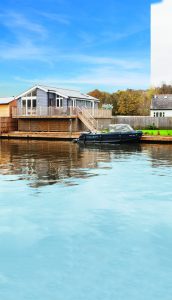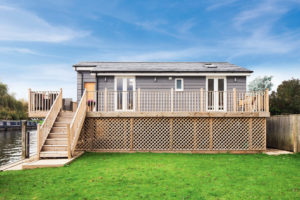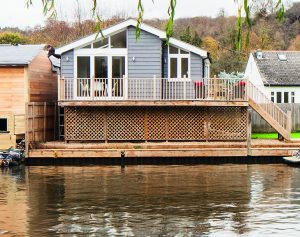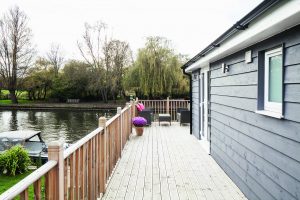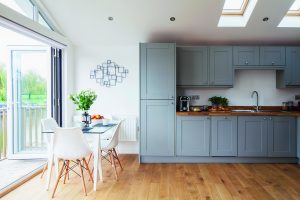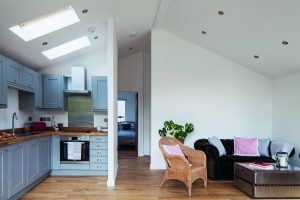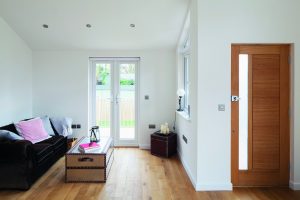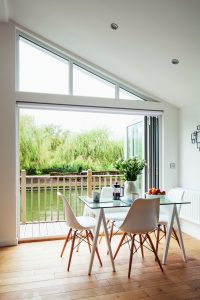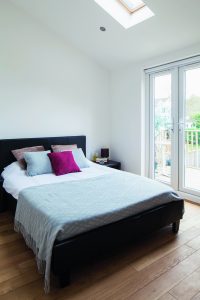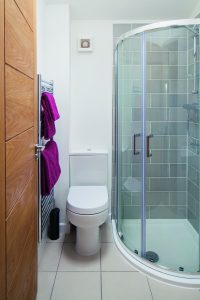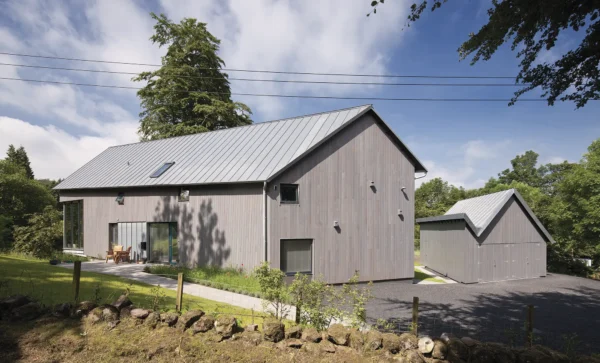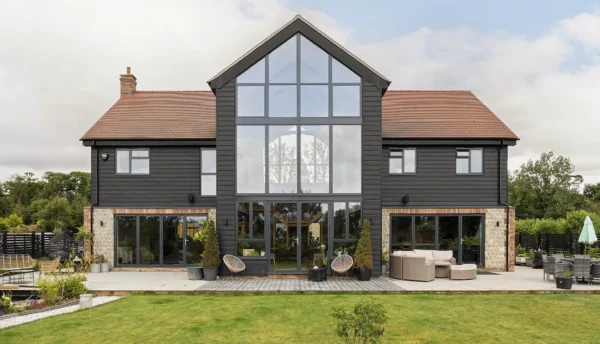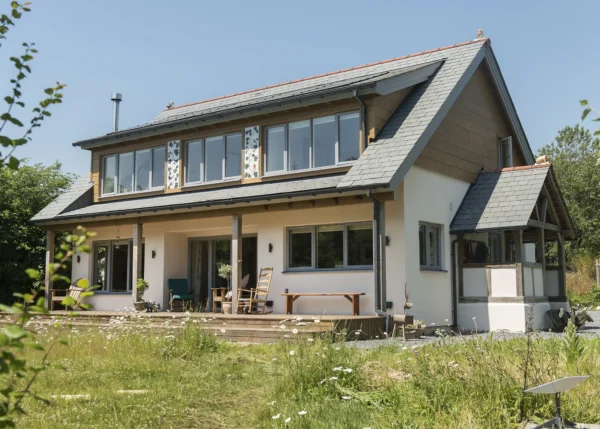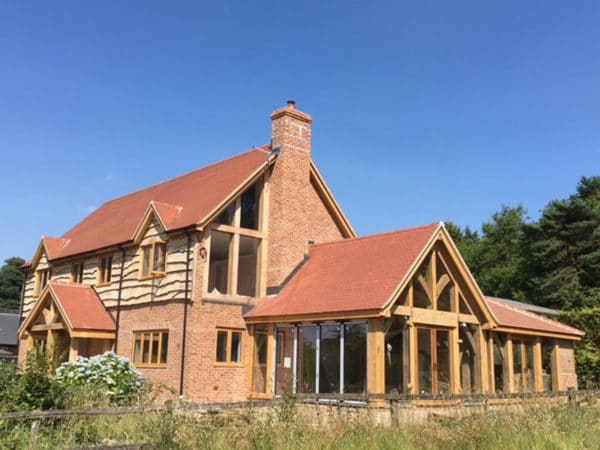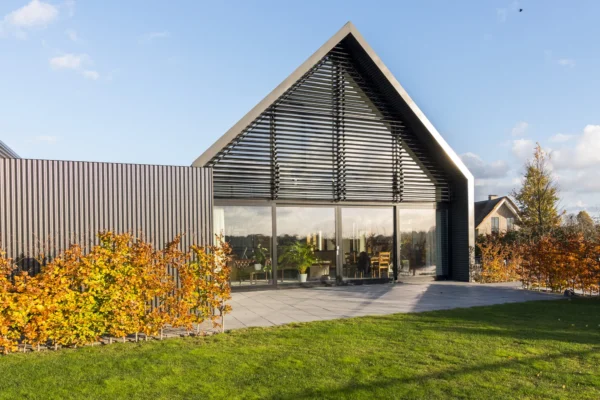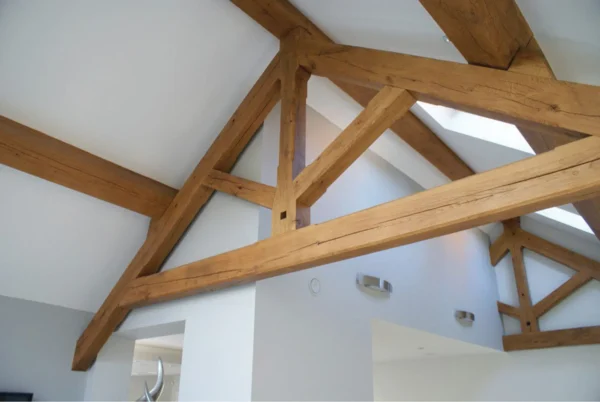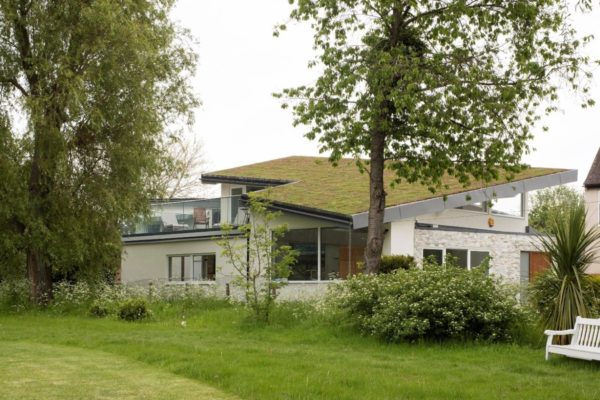Small Island Self-Build
Peter Myers’ love of the water started with childhood boating holidays spent in the Norfolk Broads with his parents – a legacy that is now continued on board his canal barge, which he enjoys together with his wife Marsha, children Paul and Sarah, and grandchildren Rosie and Louie.
Their family self-build journey started when his son Paul – a property developer – began the search for a waterside plot to moor the barge. He came across the perfect 21m stretch of land on Rod Eyot island, Henley-on-Thames, in an auction catalogue.
“The site came with planning permission and its own mooring, which is extremely valuable in this location, as 14m landings can cost as much as £185,000,” says Paul. “The beauty of this opportunity was that it offered us the chance to build our own home and have somewhere to put the boat. It also provided access to electricity and water all year round without having to buy a berth in a marina, which can cost £5,000 annually.”
- NamesPeter & Marsha Myers
- LocationRod Eyot Island, Henley-on-Thames
- ProjectSelf-build
- StyleContemporary New England
- Construction methodTimber frame
- Plot cost£230,000
- House size53m²
- Build cost£170,000
- Total cost£400,000
- Build cost per m²£3,208
- Construction timeSeven months
- Current value£550,000
With a maximum budget in mind, Peter went along to the auction, with Paul tuning in online in anticipation from his Greek holiday hotel. “The atmosphere was intense, as there were a good few hundred people in the room,” he says. “I felt anxious bidding without my son there – I’d bought furniture at auction before, but never a house.
I let two potential buyers fight it out for a while and then I went in for the first time with our maximum limit. To my complete surprise, mine was the winning offer! When the hammer went down, we exchanged, signed a contract and paid 10% of the value there and then.”
Not plain sailing
The site’s outline planning permission and flood risk assessment determined that the property needed to be built 2.7m above riverbank level. “The previous year quite a few homes on the island had been left damaged by floods. In fact, the raised water levels had affected our land too, as the remains left over from several old outbuildings had been reduced to rotting pieces of wood,” says Peter.
The idea of self-building on an isolated site left them feeling a little out of their depth. “It really felt like we were in unknown territory as Paul had never built on an island before,” adds Peter.
The plot came with a firm and modest footprint, which meant the scheme was restricted in size. Paul hired a structural engineer to produce a set of drawings and assist with Building Regulations. He then tweaked the plans himself, along with the assistance of an architect friend who had already built his own home on the island.
Building work began during the winter of 2013, and Paul’s industry insight was put to the test as he decided to take on the role of project manager. “I used dad’s barge as an office to keep warm and dry, and managed all the paperwork on site,” he says.
The first hurdle was working out the best foundation solution. “This was definitely the hardest and worst part of the process,” says Paul. “Initially, we assumed that the building would be positioned on a shallow base on brick piers However, as we were constructing on a riverbed, our surveyor suggested we undertake a soil survey. It turned out that we had to drill way below the riverbed in order to find the solid ground needed for the laboratory analysis.”
The answer was to combine piled concrete foundations with a galvanized steel framework to reinforce and form the main structural shell.
All aboard
Building on an island presented many challenges, as Rod Eyot is inaccessible except by boat. “You can’t get to the plot by foot or road so you’re marooned there unless you have river transport,” says Peter. “Every household on the island has a space in a private car park on the main bank in Henley and a vessel to go back and forth in.” All the building equipment and workforce had to be delivered to the site in this same way – even the heavy piling rig and digger.
The weather wasn’t always on their side either, meaning the team needed to navigate some fast currents. “We hit a real low point when the pontoon became heavier than the fishing boat that was towing us, meaning that we were out of control floating down the water towards Henley Bridge,” says Paul.
“We had to throw ropes to people on the bank to rescue us in the pouring rain. We ended up heaving the load across the water by pulling on ropes by hand – we must have hauled 8-10 tonnes of materials across 8m of river that day.”
Eco features
There is no gas on the island, so everything in the house is powered by electricity. The Myers’ have incorporated an air source heat pump that converts warmth in the air into energy and hot water through a heat exchanger. This useful device can also be used for air conditioning when the weather gets warm.
Another eco-friendly feature of the property is the Vortex sewage treatment, which converts waste into clean water that is then pumped back into the river. “Many homes on the island have large septic tanks that need to be regularly emptied. Including one would have meant digging a hole large enough to place it lower than the waterline, along with the added expense of transporting the excavated soil off the site,” says Paul.
Water ways
After years in the planning stages and several months of building, the dwelling was finally finished in spring 2015. “We did find it hard at times, but looking back it was all a big learning curve for me,” says Paul. “My next scheme is definitely going to be somewhere warm and dry, and not a puddle in sight!”
Peter is thrilled with the end result and puts the success down to his son’s skilful work as project manager and talent as a builder.
“We love the kitchen and the wide decked veranda that wraps around the dwelling; it’s a lovely sunny spot and great for me to practice some photography. Marsha finds this relaxing location a fantastic place to work from home,” he says.
“Everyone who comes to visit comments on our property’s wow factor. Thanks to Paul we now have a beautiful house in the heart of Henley with a 21m mooring right on the River Thames – it’s perfect.”
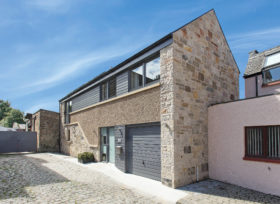
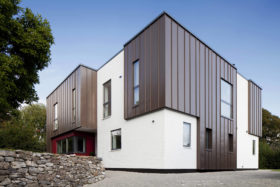


















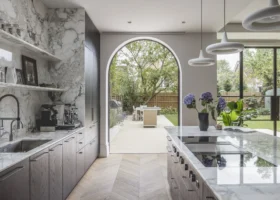

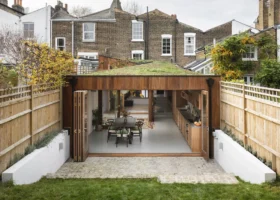
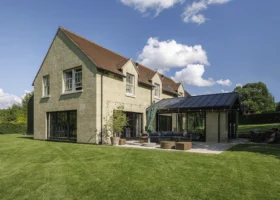
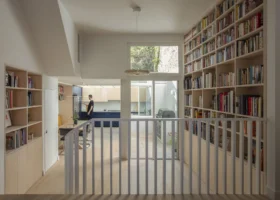
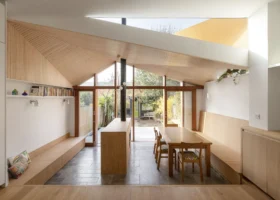












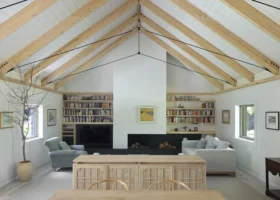
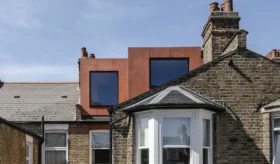
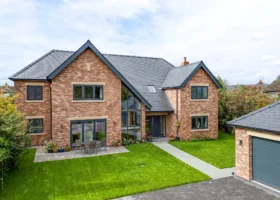
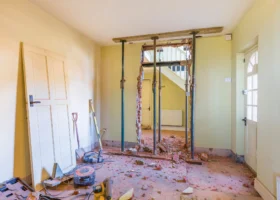

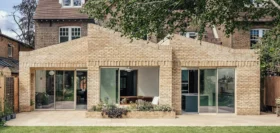








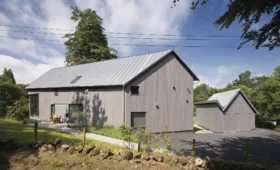











































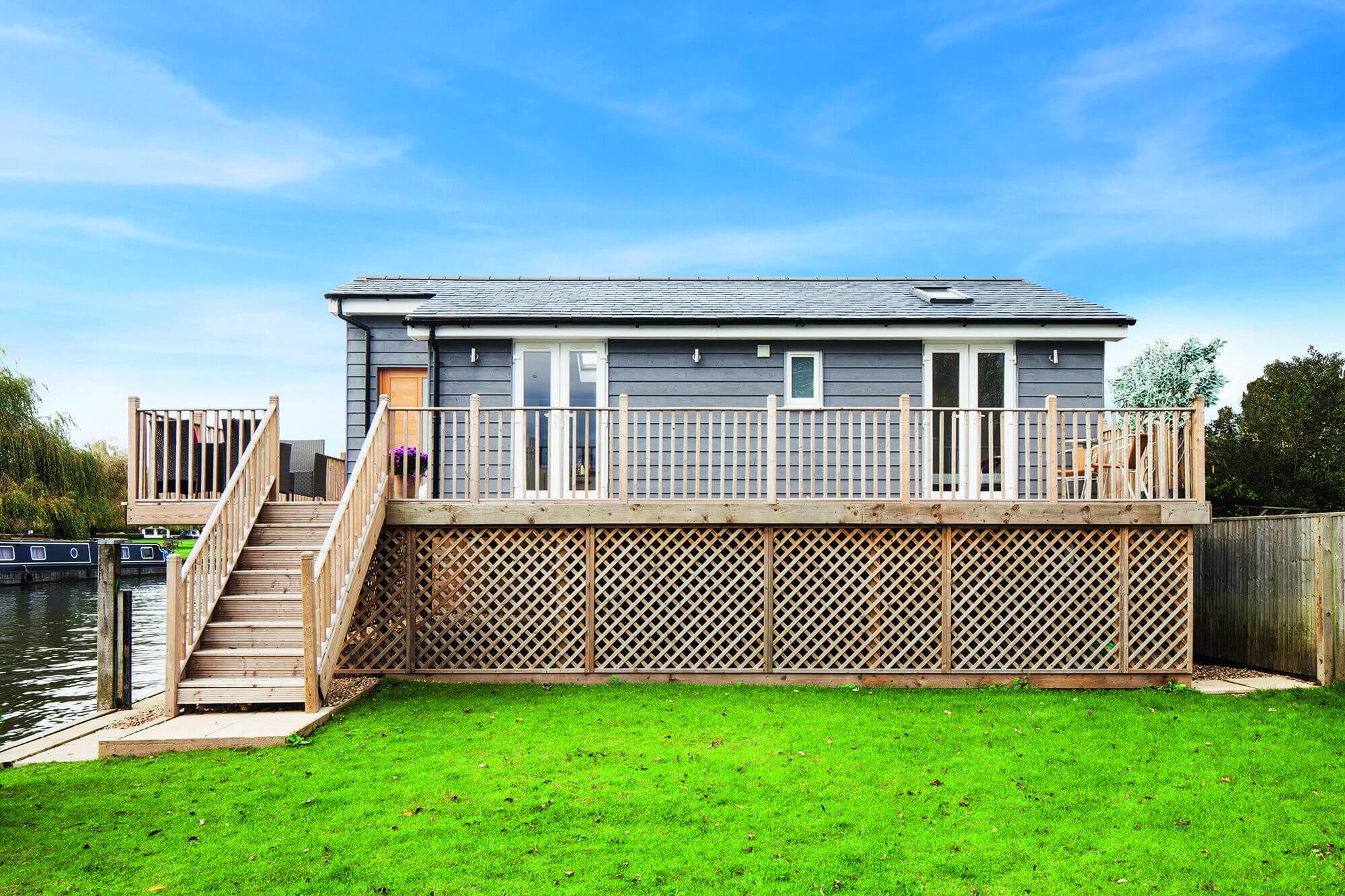
 Login/register to save Article for later
Login/register to save Article for later
